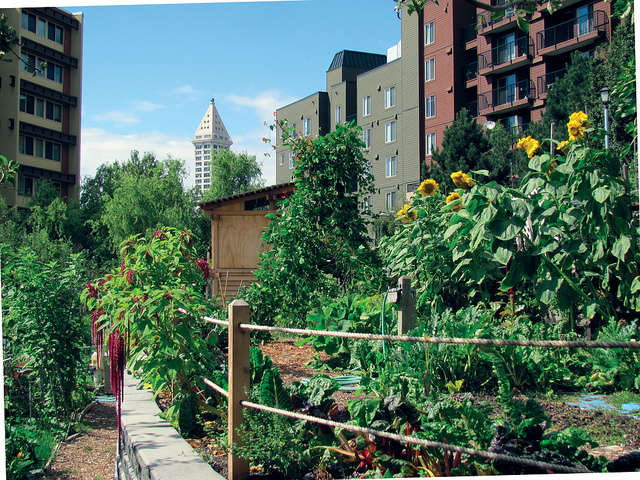Top Guidelines Of City Blooming
Top Guidelines Of City Blooming
Blog Article
Some Known Questions About City Blooming.
Table of ContentsIndicators on City Blooming You Need To KnowCity Blooming - QuestionsThe Best Strategy To Use For City BloomingNot known Details About City Blooming The smart Trick of City Blooming That Nobody is Talking About
Interested in growing food for sale in the City of Chicago? Considering starting a neighborhood garden? Adjustments to the Chicago Zoning Regulation allow farming uses like area yards and urban ranches in many components of the city. Below is a list of frequently asked inquiries regarding the policies and policies that farmers should consider when planning a metropolitan agriculture project.
The zoning change does not customize any type of other codes taking care of composting, building permits, purchasing or leasing City had building, service licenses or ecological contamination. There are existing codes that manage these issues and they stay in full impact and might apply to your project. Neighborhood gardens are usually possessed or taken care of by public entities, civic companies or community-based companies and kept by volunteers.
Urban farms grow food that is planned to be marketed, either on a not-for-profit or for-profit basis. As a result of their industrial objective, urban farms need an organization certificate. Yes. An area yard is enabled to offer surplus produce that was grown on website if the sales are accessory or subordinate to the yard's main purpose defined above.
All about City Blooming
Composting is allowed yet only for plant material that is produced and made use of on site. The amount of compost product can not surpass 25 cubic yards at any provided time according to the requirements in 7-28-715 of the City's Municipal Code. Yes. Because the soil at the majority of new yard sites requires modifying, garden compost, soil, timber chips, or various other products can be obtained to create or enhance the growing space - balcony and patio garden design.

If a building license is needed after that the hoophouse will be taken into consideration an accessory structure. You can learn more regarding the building license requirements by contacting the Department of Structures. The 25,000-square-foot size limitation is meant to stop a single community yard from controling an offered block or detracting from the block's existing property or industrial character.
The limit does not use to yards located in Public Open Space (POS) areas. Can there be even more than one area yard that is 25,000 square feet on a single block? Fencing is not required, nevertheless, gardens that have huge auto parking locations might be needed to set up fencing or various other landscape design functions.
The Single Strategy To Use For City Blooming
B1 & B2 areas require that all business use tasks be conducted indoors. Is fencing required for city farms? Fencings might be needed, along with landscape design and testing, for specific car park locations and outside job or storage locations depending on area and the certain activity taking place.
Yes. Urban farms require structure permits and zoning authorizations prior to building and construction. Various other kinds of city review may be called for relying on certain frameworks, activities, size, landscaping, licensing, public heath and stormwater management issues. Most of these demands are determined in the project design or allowing process, nonetheless, the applicant may be responsible to separately determine specific licenses or permits that may be called for.
The Department of Company Affairs and Customer Protection can assist identify the details type of organization certificate that's required. Off street parking is needed for the majority of commercial projects in Chicago. The investigate this site called for number of car park rooms is based on the number of employees working on website and not the square footage of the expanding area.
City Blooming for Beginners

A metropolitan ranch can market compost material created on site, nonetheless, the operation must comply with the regulations in 7-28-715 of the Chicago Municipal Code. Aquaponic systems are permitted inside your home on city ranches in numerous zoning districts.
As much as five hives or nests of honey bees may be maintained as an accessory use. Nevertheless, beekeepers need to sign up with the Illinois Division of Farming. For more details about the recommended zoning change you may contact the Division of Real Estate and Economic Development, Bureau of Planning and Zoning at 312.744.8563.
Farming in cities and urban areas A metropolitan ranch in Chicago. Urban agriculture describes numerous techniques of growing. https://cityblooming.blog.ss-blog.jp/2024-06-27?1719472203, processing, and distributing food in urban areas. The term additionally puts on the area activities of animal husbandry, aquaculture, beekeeping, and horticulture in a city context. Urban farming is identified from peri-urban agriculture, which happens in backwoods at the side of residential areas.
How City Blooming can Save You Time, Stress, and Money.
, who look for to form social networks established on a shared principles of nature and community holism. These networks can develop by method of formal institutional support, coming to be integrated right into regional town planning as a "transition town" motion for sustainable urban growth.
The more direct accessibility to fresh vegetable, fruit, and meat items that might be realised with urban agriculture can boost food protection and food safety while decreasing food miles, leading to reduced greenhouse gas exhausts, thus adding to environment change mitigation. A few of the initial proof of metropolitan agriculture originates from Mesopotamia.
Report this page